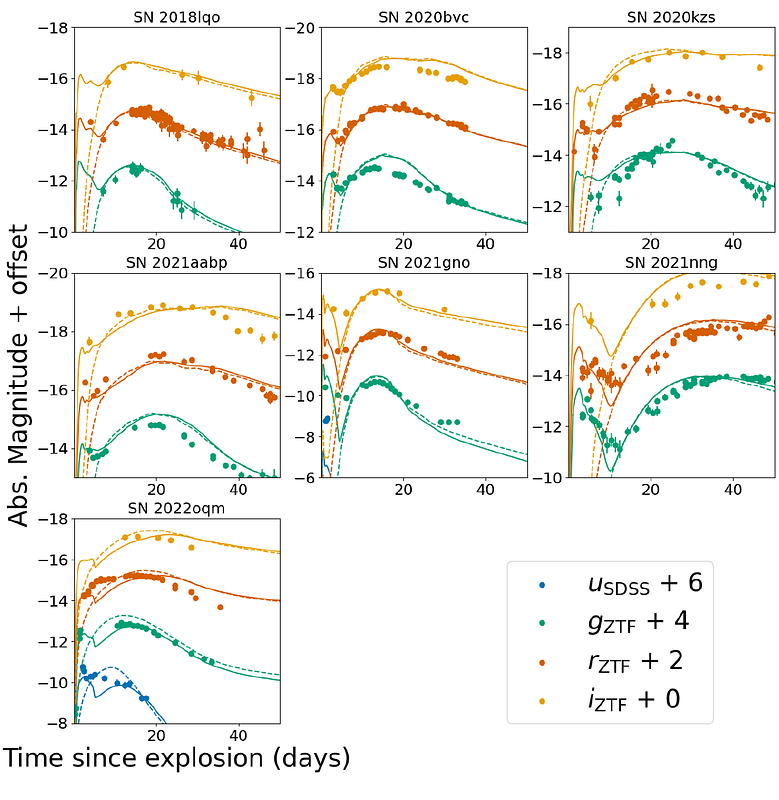Hydrodynamic Modelling of Early Peaks in Type Ibc Supernovae with Shock Cooling Emission from Circumstellar Matter

Hydrodynamic Modelling of Early Peaks in Type Ibc Supernovae with Shock Cooling Emission from Circumstellar Matter
Ryotaro Chiba, Takashi J. Moriya
AbstractRecent high-cadence transient surveys have uncovered a rare subclass of Type Ibc supernovae (SNe) that exhibit an early, blue peak lasting a few days before the main, radioactively powered peak. Since progenitors of Type Ibc SNe are typically compact and lack an extended envelope, this early peak is commonly attributed to shock cooling emission from circumstellar matter (CSM) surrounding the progenitor star. As such, these SNe provide a unique opportunity to constrain the pre-explosion activity of Type Ibc SN progenitors. We present the first systematic study of this Type Ibc SN population that uses hydrodynamic modelling. We simulated Type Ibc SNe exploding in a CSM using the multi-group radiation-hydrodynamics code STELLA, exploring a range of SN and CSM properties. By comparing the resulting theoretical multi-band light curves to a sample of seven Type Ibc SNe with early peaks, we constrained their CSM properties. Assuming a wind-like density distribution for the CSM, we found CSM masses of $10^{-2} - 10^{-1} \ \mathrm{M}_\odot$ and CSM radii of $(1 - 5) \times 10^3 \ \mathrm{R}_\odot$. While the masses were roughly consistent with a previous estimate obtained using an analytical model, the radii were significantly different, likely due to our assumption of spatially spread out CSM. We infer that the progenitors could have created CSM via late-time binary mass transfer or pulsational pair instability. We also estimate that, in the planned ULTRASAT high-cadence survey, $\sim 30$ shock cooling peaks from Type Ibc SNe will be observed.